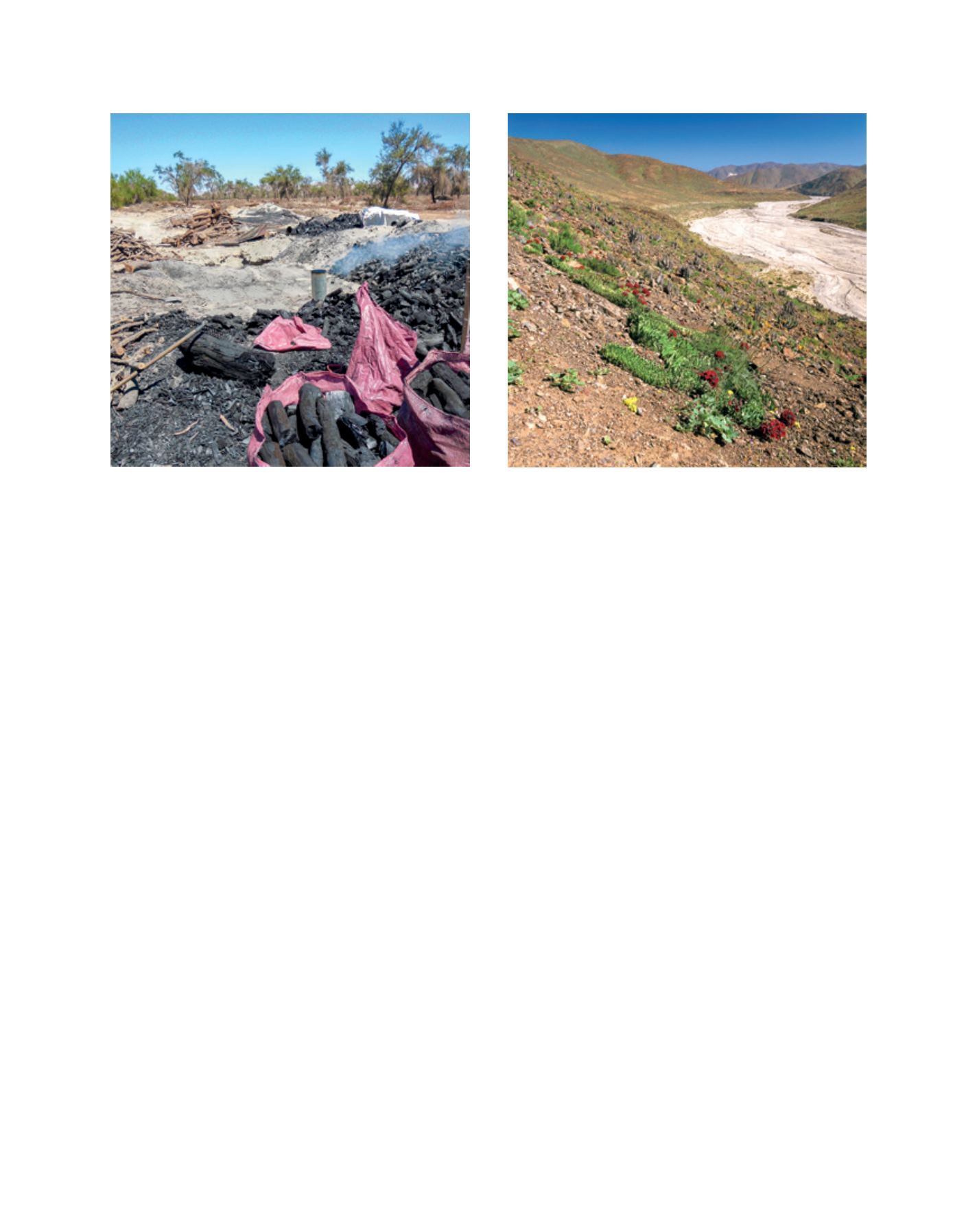

[
] 73
from Deforestation and Forest Degradation (REDD+) of the
United Nations Framework Convention on Climate Change
(UNFCCC). The purpose of this national strategy is to design
and apply public incentives that may provide landowners of
xerophytic vegetation and forests with access to benefits from
the ecosystem services they provide.
Strategic activities of the ENCCRV emerge as priorities
from local and indigenous communities, and they are imple-
mented as pilot projects and as part of the commitments to
the UNFCCC and UNCCD. Strategic activities are also inte-
grated into a proposal for Intended Nationally Determined
Contributions to the UNFCCC, as well as the process for
aligning PANCCD-Chile to the 10-year strategic plan of the
UNCCD funded by the Global Environment Facility (GEF) and
the United Nations Environment Programme (UNEP), and to
the Global Land Degradation Neutrality Project where Chile
participates in a voluntary modality. Pilot projects have been
funded by international cooperation such as the United Nations
Development Programme (UNDP), the European Union, GEF,
the World Bank, UN-REDD, the Government of Switzerland,
the Chilean Government, the Forest Carbon Partnership
Facility (FCPF) and private companies, with a total invest-
ment of US$13 million. A system for the distribution of benefits
and safeguard systems has been fully developed with funding
from FCPF. Strategic activities are implemented in six major
ecoregions in Chile: arid, semi-arid, Mediterranean, temperate,
austral and island oceanic territories.
In the arid ecoregion, the United Nations’ Millennium
Ecosystem Assessment initiative in ‘Salar de Atacama’
developed a unique sub-global assessment for desertifica-
tion located at the heart of the Atacama Desert, the oldest
and driest desert in the world. The Atacama Desert in Chile
includes part of the American Puna High Plateau, the living
scenario for the Andean cultures Aymara, Quechua and
Likan-Antai or ‘Atacameños’ that built up the landscape to set
in production this extremely fragile land through an outstand-
ing irrigation system and extensive terrace system known as
‘andenes’, which gave its name to the Andean high mountains.
In 2003-2005, this initiative assessed the provision of ecosys-
tem services from drylands for human well-being through a
participative process in a Linkan-Antai (Atacameños) ethnic
community. The process related to water resources, tourism,
minerals, biodiversity, Likan-Antai cultural heritage and
desert air as a window for astronomy. As a result, CONAF
developed a typology of projects and a joint administration
agreement with the Likan-Antai people for co-management of
the national parks within the Likan-Antai territory.
In the semi-arid ecoregion, the ‘Peñablanca’ Fog Catchment
Project is the flagship project on innovative systems for fog
harvesting. The agriculture community has a special legal
regime of common property unique to this region. Peñablanca
is one of these communities that until the early twentieth
century provided wheat and livestock for the whole region
and exported its products to the northern part of the country
during the golden age of nitrate production. Intensive use
fully exhausted the land, and since 1993 wheat has not been
sowed in this community because it had become impossi-
ble to obtain a good yield. In 2004, the community received
funding from GEF, UNDP and European Union through the
Small Grant Programme to Combat Desertification to install
a set of fog collectors to provide water for afforestation and
tourism activities. The commitment of the community during
the mega-drought, which began in 2002 in this region, made
it possible to use water collected in many innovative ways,
including production of a local beer named ‘Atrapaniebla’
(‘Fog Collector’). Other demonstrative initiatives in the
region include the ‘El Sauce’ Soil and Water Conservation
Project implemented by CONAF and the Coquimbo Regional
L
iving
L
and
Image: CONAF
Rain may be absent for centuries in the Atacama Desert (semi-arid
ecoregion), but when it occurs plants such as this
Bomarea ovallei (Phil.)
create the ‘Flowered Desert’ phenomenon
Image: CONAF
The ‘Tambillo’ Prosopis forest is an example of the high biological diversity
in the Atacama Desert (arid ecoregion) providing local people with animal
fodder and charcoal
















